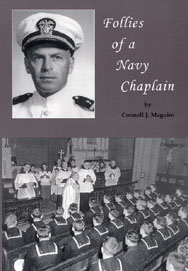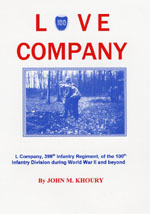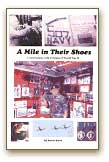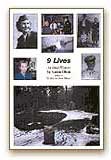The online edition
©2014, Aaron Elson
Chapter 8
Hill 122 (continued)
Jack Sheppard
After the infantry took the area, I went up, me and the first sergeant, and we looked in the tanks, and there’s nothing in the tanks but ashes down on the bottom.
Right next to one tank was a foxhole, and in it was Abraham Taylor. He had a rifle leaning over the edge, and he was dead. He had been shot through the head. Quick. But he was the only one I knew for sure was dead. All the rest you wondered about. Did they get out and were taken prisoner, or what?
After that, we were down to seven [out of an original 17] tanks in the company, and not many men. When the first replacements came on, we weren’t wearing any insignias, because the snipers would use them as targets, and the only way you could identify an officer was I had a white stripe, about an inch and a half long and about four inches wide, down the back of the helmet. If it was up and down it was an officer, if it was sideways it was a sergeant, so you knew who the command was.
These recruits walked up to us and we’re all just standing there, and one of them looks at me and says, "Hey, Mac, what in the hell happened to you?" And the first sergeant says, "Shut your mouth, that’s a company commander." That must have made their day. If a company commander can get looking like that, what’s going to happen to them? I still had my combat jacket, and it had bloodstains on it. And my face was bandaged, my hand was bandaged, and I still had two of the most glorious black eyes from the concussion.
Kenneth Titman
The Germans took me to an interrogating officer. And he said, "You know, your battle is over. You’re going back to the rear."
And I said, "Oh?"
He said, "Yes. The war is over for you. What outfit are you from?"
I wouldn’t tell him.
Then he said, "How many men are back there in [the tanks]?"
I said, "I don’t know."
I was sitting there, and while this guy was asking me all those questions, they opened up one of those burp guns. And I said, "What was that?"
He said, "That’s somebody who wouldn’t talk."
Well, I figured that’s just a gimmick. So I said, "I’m not telling you nothing." The Germans to me, a soldier’s just like a doctor or a lawyer, that’s their profession. That’s the way they think. And they appreciate somebody who doesn’t tell them information.
He said, "We’re going to take you back to Rennes, to the hospital, and when we get there you’ll have good care." Then they put me in a meatwagon and took me down the road. We had artillery firing all around us, our own artillery, and they took me to this hospital. They put me in a bed there, and my leg was so bad, it was full of shrapnel and infection was setting in. The French nurses came around with these sticks, when the wound’s all opened up, they put the sticks on there to heal, to try to burn the pus and everything off. That hurt a little bit, and she said, "Just take it easy, because we might get liberated."
They put a big red cross on top of the hospital. We didn’t have anything to eat. All we had was peaberry coffee and moldy bread. When I got liberated I weighed 110 pounds. And Dr. Powell, my doctor, told me when I got liberated and they took me down to the field hospital, he said, "If you’d have been there ten more hours you’d have lost your right leg."
They put me on a plane and took me over to Swindon, England — that got to me, because Swindon is where we were before we made the invasion. Dr. Powell looked at my leg and said, "You’ve got a piece of shrapnel up next to your bone and one back behind it. We’re gonna cut that leg open, and we’ll give you a spinal shot, to deaden it. You’re not gonna feel a thing." And he opened my leg up and took out two big pieces of shrapnel, each of them about as big as my thumb.
Jim Gifford
When I got into the 712th, they told me to go over to where Jim Flowers’ tanks were. That was my first contact with the 712th, to go to Jim’s platoon, which had just been knocked out.
I had the shitty job of going back to those tanks and getting the dog tags of those that had died. We made up a little box. If you found anybody’s remains, you always put their dog tags in that box. It went with the body.
I had to get in the tank and dig these, look for the ... these guys had all been incinerated, because these tanks were like a furnace. It was like getting into a furnace after something’s been destroyed. So I had to dig around. I’d go where the tank driver was supposed to be sitting and I’d find a dog tag. I wouldn’t even find the body. This is the way it was. It was a very horrible experience, especially when you’re gonna get in a tank yourself the next day.
I don’t remember any of the names. I just found the dog tags. They were all our crews. I could look up the names. There was just one tank in particular that, one guy, a gunner had survived a little bit, but it’s a gruesome story, I probably don’t even want to tell it to you. He was still sitting in the gunner’s seat. There was nothing left of him but maybe his hips. And when I was looking for the dog tags I pushed this thing, I thought it was a piece of the machinery, and it was, a piece of it came off like a turkey, like the skin on a turkey came off, this big black crust, and then I realized it was what was left of him.
Those guys never knew what hit them. Those tanks exploded. You’ve got all that hundred-octane gasoline, nobody had a chance.
Nine members of the 712th Tank Battalion — James A. Bailey, Kenneth R. Cohron, Paul A. Farrell, Harold A. Gentle, Gerald A. Kiballa, Laverne Patton, Eugene Tannler, Abraham I. Taylor, and Stephen J. Wojtilla — were killed in the action in which the four tank were destroyed at the base of Hill 122.
- - - -






